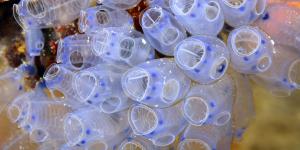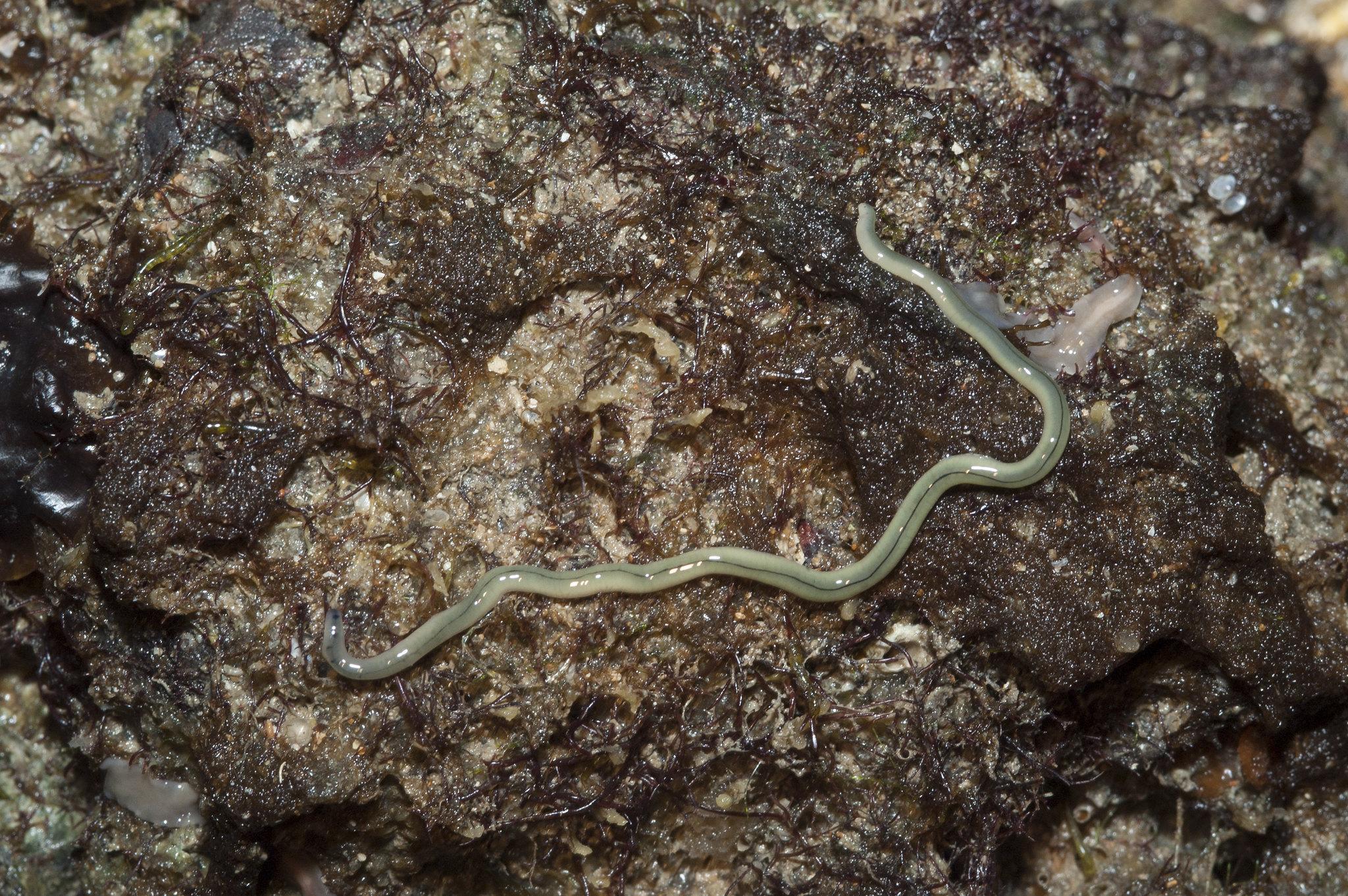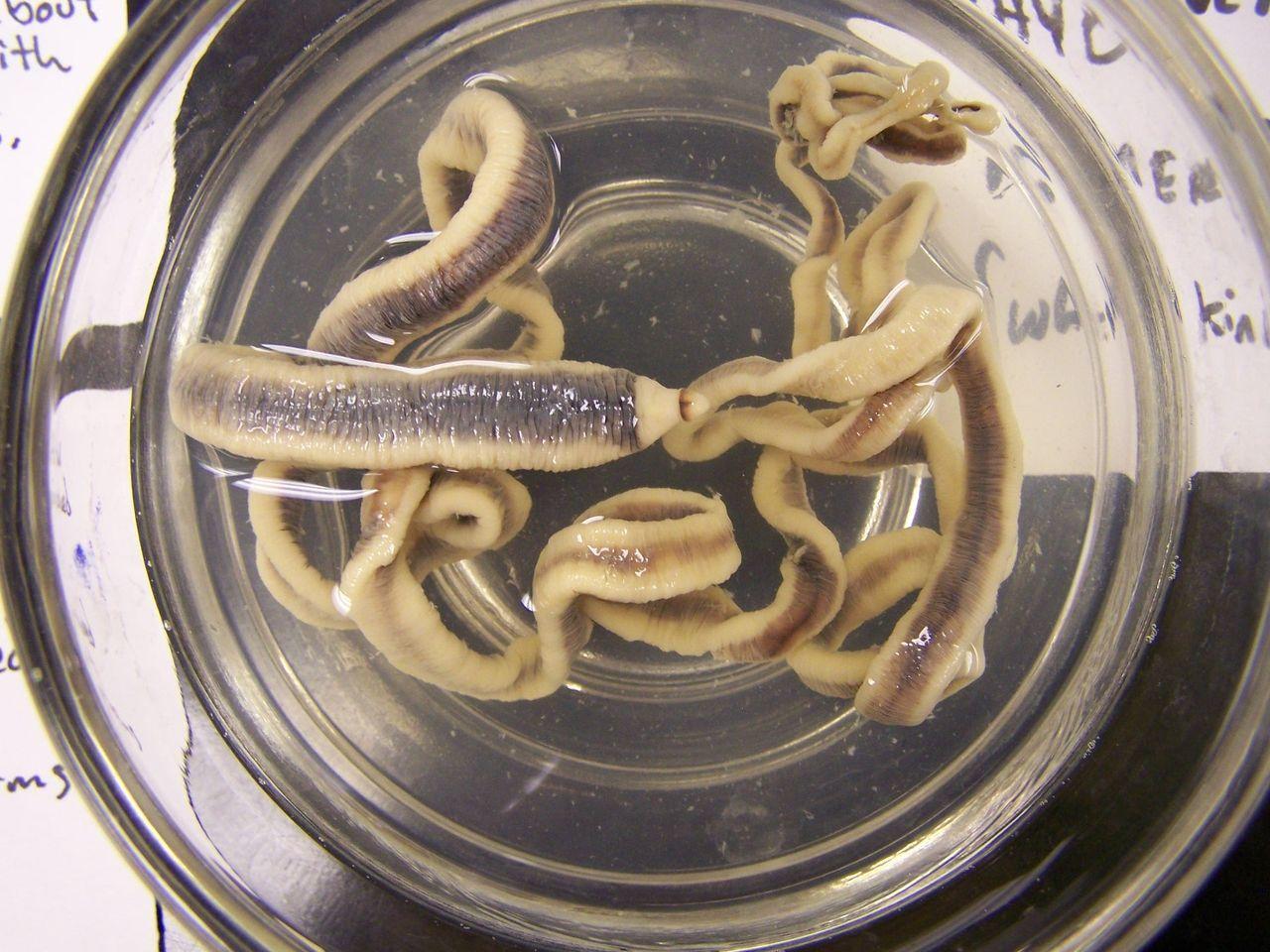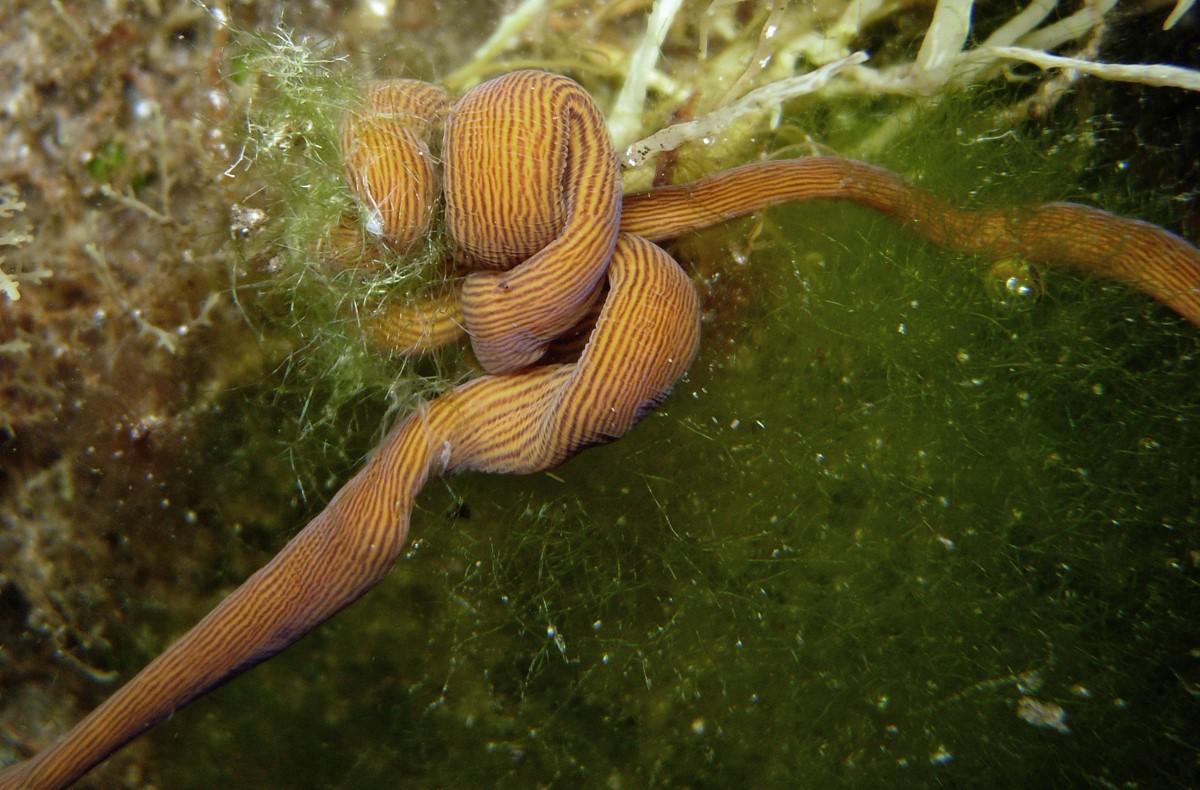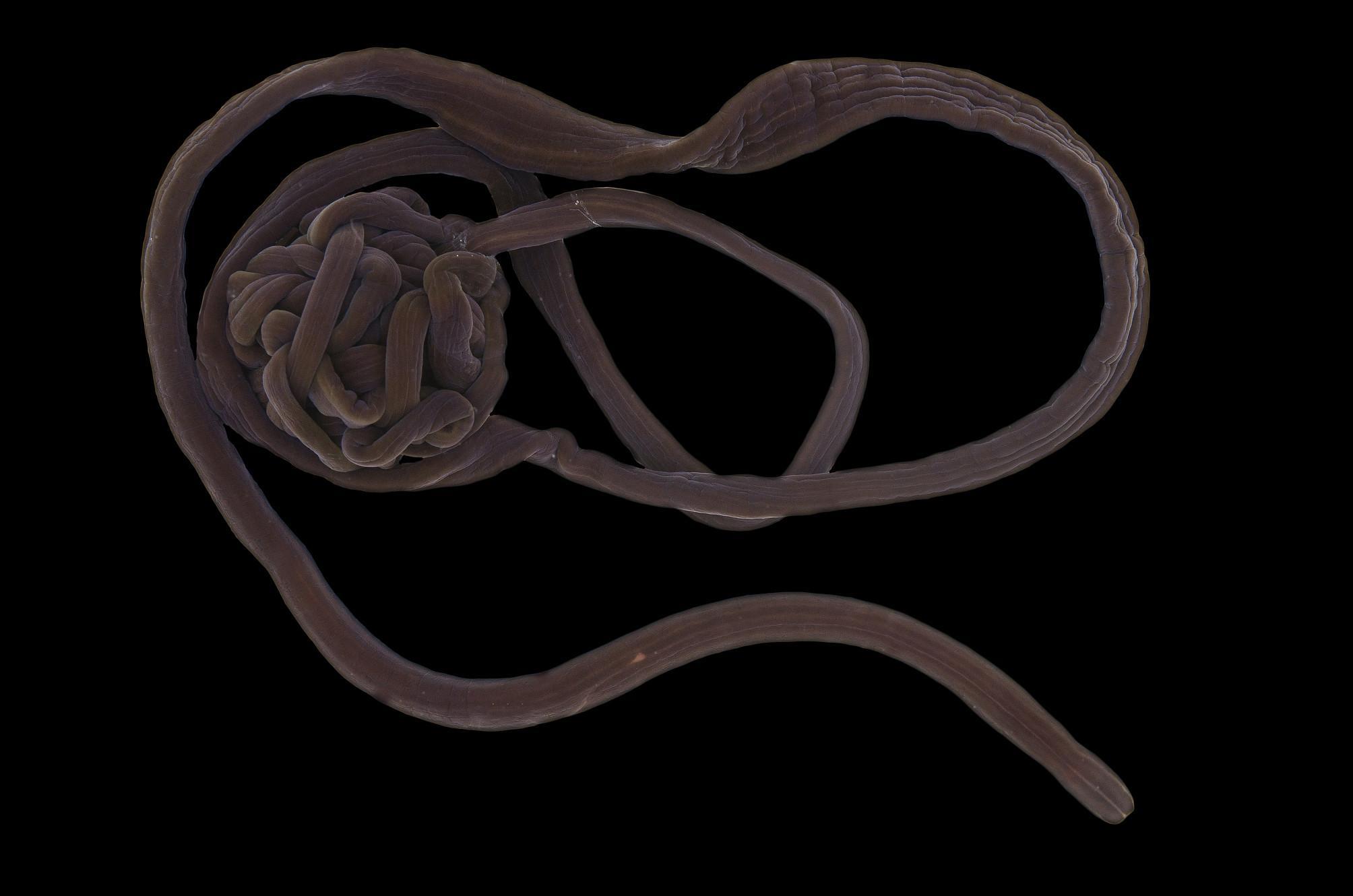What Are Ribbon Worms?

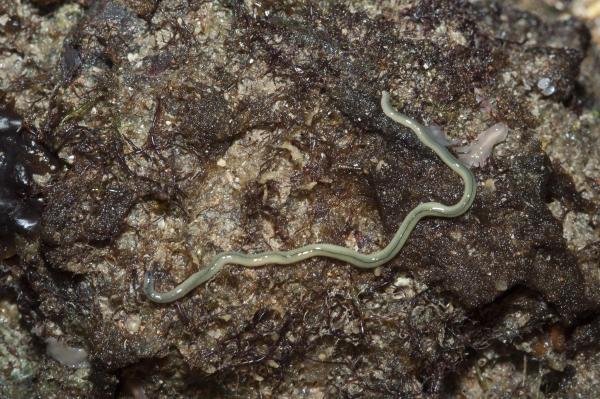
Making up the phylum Nemertea, nemerteans are commonly known as ribbon worms. They are unsegmented, aquatic worms that are ribbon-like in shape and inhabit shallow waters. Also known as proboscis worms, their common names refer to the presence of a long, muscular tube that can extend rapidly known as a proboscis. It is used to capture prey accurately and efficiently. Most ribbon worms are marine, although there are freshwater ribbon worm species and some can even inhabit moist soils.
To learn more, thedailyECO asks what are ribbon worms? We discover what characteristics proboscis worms share, where they live, how they eat and what types of ribbon worms we can find in nature.
What are ribbon worms?
Also known as nemerteans or proboscis worms, ribbon worms are types of invertebrate worms which make up the phylum Nemertea. One of the characteristic traits which all ribbon worms share is an unsegmented body. This is unlike segmented worms of the phylum Annelida which include common earthworms. In comparison, ribbon worms are less compicated organisms.
In addition to lacking segments, proboscis worms are elongated, flattened and free living. They are aquatic worms, although some can live in very moist soils. While a minority are freshwater worms, the majority live in saline marine environments.
Some confuse ribbon worms with flatworms of the phylum Platyhelminthes, but their internal anatomy differs considerably. Their defining characteristic is the presence of a trunk or proboscis which is used to capture food. It is also used as a method of defense and to aid in movement. There are approximately 1,200 species distributed in two the classes Anopla and Enopla.
Learn about another type of marine worm with our article asking what are polychaetes?
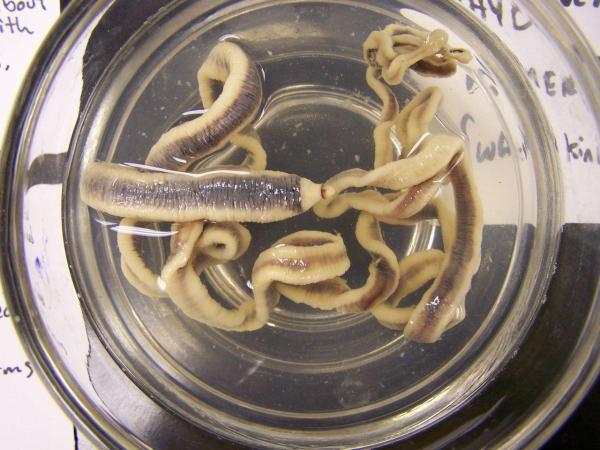
Characteristics of ribbon worms
We have provided a basic explanation of what ribbon worms are, but we can better know these invertebrates by lookin at their specific characteristics:
- They come in a variety of sizes, from very small to huge ones like the bootlace worm (Lineus longissimus) which can reach up to 100 ft (30 m) in length.
- Some have bright colors and others have pale or cryptic colorations.
- They have bilateral symmetry and a contractile body. The anterior part of the body is cylindrical and the posterior part is flattened.
- They are carnivorous and voracious. They feed on live or dead prey, mainly annelids and crustaceans. There may be some parasitic forms.
- Some species dig mucus-covered holes forming well-defined tubes.
- They have cilia that they use to slide over the substrate on a film of mucus, although there are burrowing species that can move through peristaltic movements.
- Their digestive system is complete.
- Their circulatory system is closed and consists of contractile vessels located one on each side of the body that run the entire length of the animal. Sometimes they have a dorsal vessel.
- They have a proboscidean apparatus independent of the digestive tract, which may be equipped with a stylet (class Enopla) or may not (class Anopla). The stylet is used to capture prey, as it is capable of introducing toxic substances into another animal and immobilizing it.
- Gas exchange occurs by diffusion across the surface of the body wall.
- They have separate sexes with simple gonads. Some ribbon worm species are hermaphrodites.
- They can reproduce asexually by fragmentation and the regeneration process can occur in a mucous cyst.
- Fertilization is external and the eggs are released directly into the water or wrapped in gelatinous masses or inside tubes.
- The development of the ribbon worm embryo gives rise to a swimming larva. In other cases, a swimming larva with distinct characteristics called a pilidium is formed.
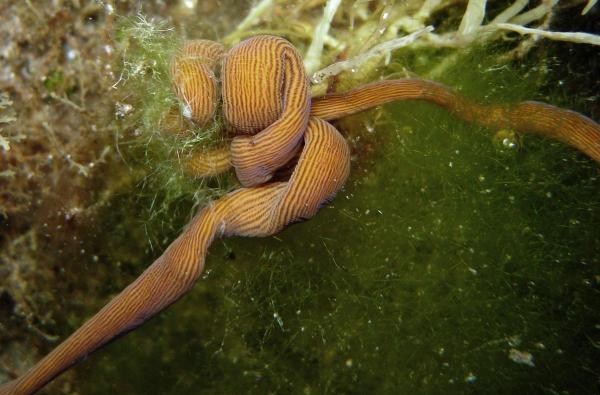
Where do ribbon worms live?
Most nemerteans are marine and have benthic habits, meaning they live at the bottom of the seabed. Some live in freshwater environments or in very humid soils. Their geographic distribution ranges from polar regions to the tropics, allowing them to adapt to a wide variety of habitats and environmental conditions.
Ribbon worms usually live under rocks, algae, sand and mud, doing so in association with other invertebrates. Some species of the Cerebratulus genus live in empty mollusk shells. In summary, ribbon worms are aquatic animals that have a wide presence in marine and freshwater ecosystems throughout the world.
Ribbon worm diet
One of the characteristics of the phylum Nemertea is the aforementioned presence of a proboscis or trunk which is independent of the digestive system. This proboscis is used to capture prey. A pore opens at the anterior end of the animal through which the proboscis emerges. This pore leads to a short canal called the rhynchocoel, the lumen of which is continuous with the proboscis.
The ribbon worm proboscis consists of a long tube which is coiled in the rhynchocoel and a fluid-filled cavity. This cavity can be considered a coelom due to its embryonic origin and structure. The posterior region of the proboscis is attached to the rhynchocoel by means of a retractor muscle.
Ribbon worms use this proboscis to feed. They are very voracious predators that take their prey by launching their proboscis, which sometimes has glandular papillae that produce mucus. The proboscis adheres to the prey and coils around it. In ribbon worm species that have a sharp-tipped stylet, this penetrates and holds the prey. By retracting the proboscis, the worm draws the prey into its oral cavity.
You can find out more about other invertebrates known for having a proboscis with our article on the differences between butterflies and moths.
Examples of Nemerteans
We look at some types of ribbon worms by looking at examples of some species:
- Bootlace worm (Lineus longissimus): also known as the giant ribbon worm, it is considered the longest nemertean and can reach lengths of up to 100 ft (30 m). It is found in shallow marine waters in northern Europe.
- Milky ribbon worm (Cerebratulus marginatus): native to the northern hemisphere where it has a wide distribution, this long and flattened worm is a good swimmer. It can also easily burrow into the substrate. It has a habit of fragmenting when handled to escape perceived danger.
- Zygeupolia rufa: a benthic, burrowing nemertean that lives in the English Channel.
- Carcinonemertes errans: a ribbon worm that lives in symbiosis with the Dungeness crab (Metacarcinus magister). It is not a parasite that feeds directly on the adult crab, but rather preys on its developing eggs.
- Arhynchonemertes axi: is the only worm within this phylum that lacks a proboscis, one of the most representative structures of ribbon worms
Now that you know what ribbon worms are and their behavior, you may want to know about other invertebrates with our article asking how do insects breathe?
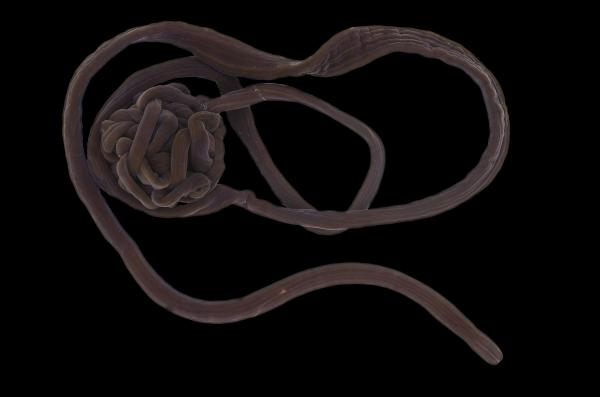
If you want to read similar articles to What Are Ribbon Worms?, we recommend you visit our Biology category.
- Hickman, C. P., Roberts, L. S., & Larson, A. (2000). Comprehensive principles of zoology.
- Ruppert, E. E., Barnes, R. D. (1994). Invertebrate Zoology. Sixth edition.




